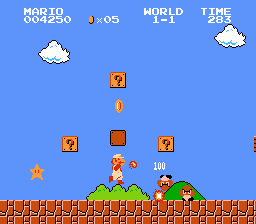Right then.
My geek love for the New Yorker and my geek love for video games recently converged under the title
Master of Play, an article about legendary game designer Shigeru Miyamoto, creator of Super Mario Bros. and many other classics.
Well, to be completely accurate, I’m not a video game geek per se. I’m more of a fantasy/modding/computer roleplaying game geek. Still, the article was fascinating as a portrait of a seminal figure in video games, and more importantly, contained a satisfying amount of general game design discussion. If you haven’t done so, you should
read the whole thing online. I found this description of Super Mario Bros. particularly interesting:
| The game had just fifteen or twenty dynamics in it—how the mushrooms work, how the blocks react when you hit them—yet they combined in such a way to produce a seemingly limitless array of experiences and moves, and to provide opportunities for an alternative, idiosyncratic style of play, which brings to mind nothing so much as chess. Will Wright cited the theory of emergence—the idea that complex systems arise out of the interaction of several simple things. |
This, I would argue, doesn’t describe most RPGs.


